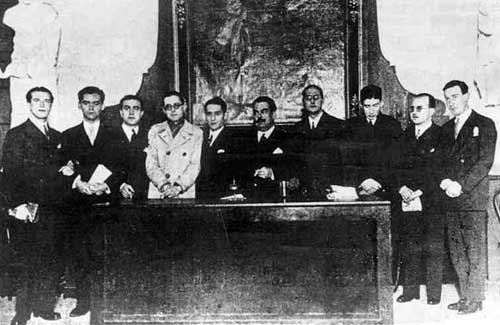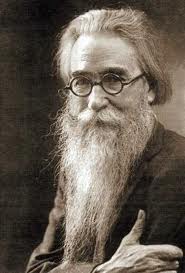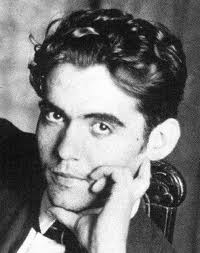Spanish Modernist Drama
History of art, including literature, is often taught by listing a number of dominant characteristics that might have given shape to the aesthetic attitudes of a specific period of time and contrasting them against the contrary, and often incompatible, criteria from another period, generally immediately before or after. And perhaps this is the most convenient way to conceptualise what otherwise would be an impenetrable maze of tastes and fashions.

Needless to say, however, this conceptual generalisation is inadequate to provide an accurate picture of the diversity that exists at any given time in the artistic scene of a country. This becomes more radically true the closer we come to the present time, both because of the decline in the hegemonic control that Academies held over artistic affairs, and because it becomes harder to make general distinctions without the necessary chronological distance.
Thus, while it is true that through the second half of the XIX century the Romantic sensibility was the dominant force in Spanish theatre, it is also true that other influences were carving their place in the literary scene at the same time. Many of these influences, such as Symbolism and Parnassianism, are drastically different from each other, and, yet, they are often bundled together under the rubric of Spanish Modernism.
Nevertheless, while it might be difficult to find a single set of characteristics that could be applied to the majority of playwrights that constitute the Spanish Modernism, it is true that some general tendencies can be found among a great majority of them, particularly a tremendous care for the written text, which gains prominence ahead, for instance, of realism or even plausibility in the plot.
Ramón del Valle-Inclán

One of the most prominent, as well as singular, writers to have emerged at the turn of the XX century was Ramón del Valle-Inclán, poet, fiction writer and dramatist, his work as a whole resists most categorisations, except for avant-garde. Part of the literary circle known as the 'Generation of 98', Valle-Inclán consciously sets out to subvert the predominant tendencies in Spanish theatre at the time.
Audacious, politically charged and intellectually challenging, he shares Spanish Modernism's general concern for form and style, taking rigorous care in the rhythm and harmony of his verse. At the same time, however, Valle-Inclán is fiercely critical of the aesthetic conventions of the time, strictly realist, conservative, refined and indulgent, above all, of the lifestyle of the capital, Madrid.
Consequently, his work will develop a reactionary vein, verging on the parodic, which will progressively move in the direction of the grotesque. Much like his own personal aspect, Valle-Inclán's productions are shaped by his quest for an alternative aesthetic, which ultimately takes them down the road of bohemian decadence and bluntness that so much favour gained in Europe in the early days of the XX century.
Speaking about as heterogeneous a period of time as Spanish Modernism, it will come as no surprise to find that Valle-Inclán's work is essentially unique in Spanish theatre. As unique, too, is the work of another representative of the dramatic scene at the beginning of the 1900s: Federico García Lorca, the illustrious son of the city of Granada.

Half a generation younger than Valle-Inclán, García Lorca, a name of reference not only within Spanish Modernism but of Spanish theatre in general, is generally grouped with the writers of the so called 'Generation of 27'. Highly influenced by his poetic sensibility, García Lorca's theatre is tremendously lyrical, always inspired by individual conflicts that reflect characteristics of the general human condition.
From the safe conformism of the aesthetic of the late XIX century, to the tragic fatalism of the 'Generation of 98', past the irreverent attitude of the decadents of the new century and culminating in the lyrical concerns of the 'Generation of 27', Spanish Modernism is a vastly heterogeneous period in which, nonetheless, Spanish theatre once again takes the centre stage.
